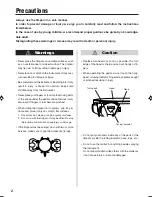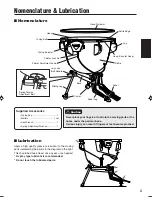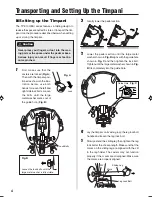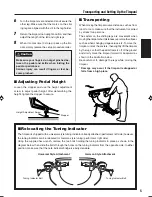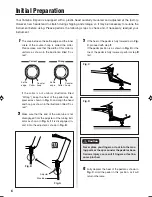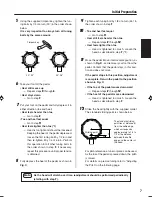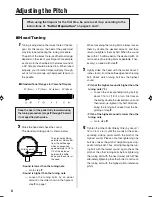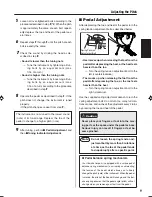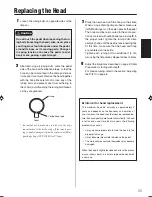
11
Replacing the Head
2
After removing all tuning bolts, mark the pedal
side of the hoop with cellophane tape, so that the
hoop can be re-mounted in the same position as
it was prior to removal. Remove the head together
with the hoop. Be careful not to lose any of the
tuning bolts and prevent dust from adhering to
them. Also, avoid touching the tuning bolt threads,
as they are greased.
* Be careful not to make any scratches in the edge
tape attached to the kettle’s edge. If the tape is peel-
ing or badly damaged, it must be replaced with Tim-
pani Edge Tape (TPT-100 Teflon™ tape).
Pedal
3
Place the new head with the hoop on the kettle.
When using a Yamaha timpani head, make sure
its YAMAHA logo is on the side opposite the pedal.
The hoop must be re-mounted in the same posi-
tion as marked with cellophane tape in step
2
. In
the proper order, tighten the tuning bolts alter-
nately by hand until the head is tensioned slightly.
At this time, make sure that the head and hoop
are centered on the kettle.
Tighten each tuning bolt an additional 1/4 of a
turn using the timpani key. Repeat at least 4 times.
4
Adjust the timpani as described on page 6 “Initial
Preparation” starting with step
5
.
For precise tuning, refer to the section “Adjusting
the Pitch” on page 8.
Cellophane tape
Hoop
●
Interval for head replacement
The maximum head life normally is approximately 2
years and depends on the frequency and duration of
use. However, the head should always be replaced be-
fore the sound quality deteriorates dramatically. If a head
is left on and used more than two years, the following
problems may occur:
• It may become impossible to tune the head to the
proper pitch range.
• It may become impossible to balance the pedal.
• The main unit mechanisms themselves may become
damaged.
When the head is slightly tensioned and its surface looks
wavy or shows dents, it is time to replace the head with
a new one.
1
Loosen the tuning bolts on opposite sides of the
timpani.
Caution
Do not touch the pedal when loosening the tun-
ing bolts (loosening the head). Also, never place
your fingers or foot into space under the pedal,
around its base, or its moving parts. Changes
in spring tension can cause the pedal to sud-
denly move, posing a great danger.
tp3100ea_en_om.6pm
08.2.5, 9:28 AM
11


